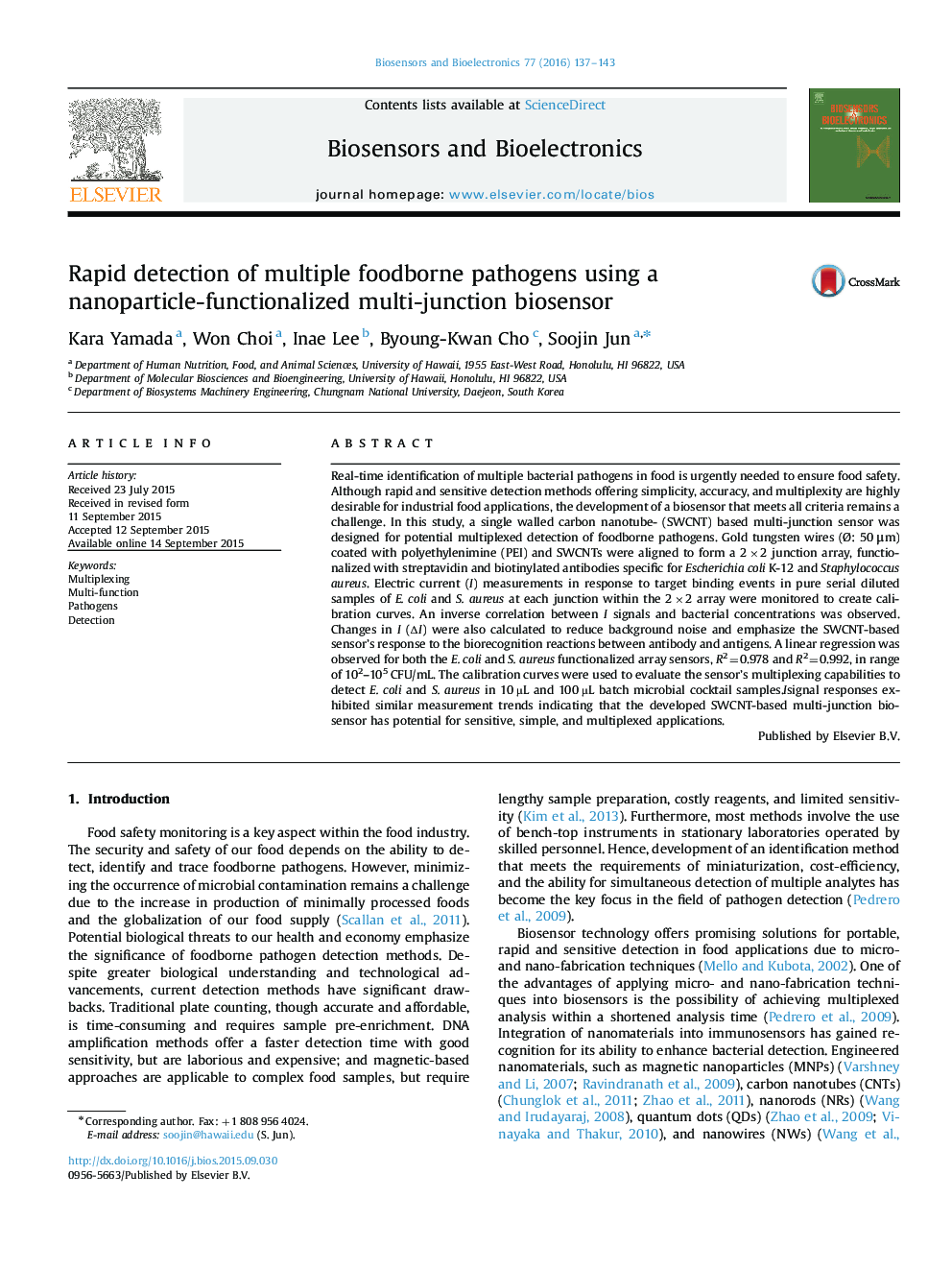| Article ID | Journal | Published Year | Pages | File Type |
|---|---|---|---|---|
| 7231297 | Biosensors and Bioelectronics | 2016 | 7 Pages |
Abstract
Real-time identification of multiple bacterial pathogens in food is urgently needed to ensure food safety. Although rapid and sensitive detection methods offering simplicity, accuracy, and multiplexity are highly desirable for industrial food applications, the development of a biosensor that meets all criteria remains a challenge. In this study, a single walled carbon nanotube- (SWCNT) based multi-junction sensor was designed for potential multiplexed detection of foodborne pathogens. Gold tungsten wires (Ã: 50 μm) coated with polyethylenimine (PEI) and SWCNTs were aligned to form a 2Ã2 junction array, functionalized with streptavidin and biotinylated antibodies specific for Escherichia coli K-12 and Staphylococcus aureus. Electric current (I) measurements in response to target binding events in pure serial diluted samples of E. coli and S. aureus at each junction within the 2Ã2 array were monitored to create calibration curves. An inverse correlation between I signals and bacterial concentrations was observed. Changes in I (âI) were also calculated to reduce background noise and emphasize the SWCNT-based sensor's response to the biorecognition reactions between antibody and antigens. A linear regression was observed for both the E. coli and S. aureus functionalized array sensors, R2=0.978 and R2=0.992, in range of 102-105 CFU/mL. The calibration curves were used to evaluate the sensor's multiplexing capabilities to detect E. coli and S. aureus in 10 µL and 100 µL batch microbial cocktail samples.Isignal responses exhibited similar measurement trends indicating that the developed SWCNT-based multi-junction biosensor has potential for sensitive, simple, and multiplexed applications.
Related Topics
Physical Sciences and Engineering
Chemistry
Analytical Chemistry
Authors
Kara Yamada, Won Choi, Inae Lee, Byoung-Kwan Cho, Soojin Jun,
